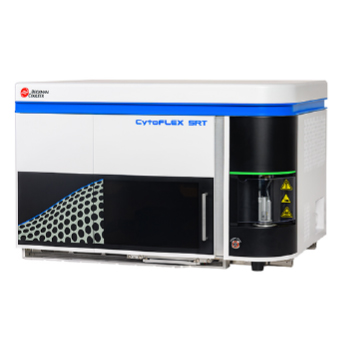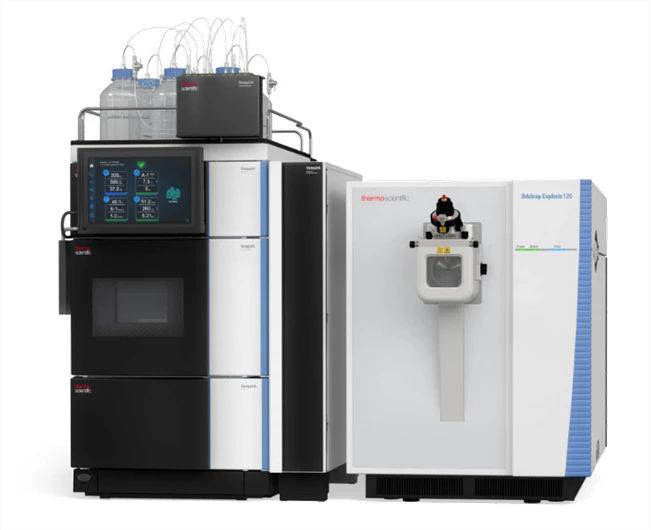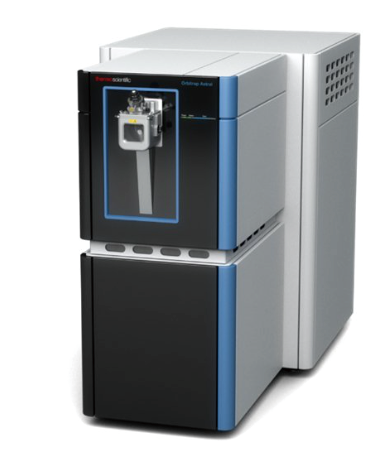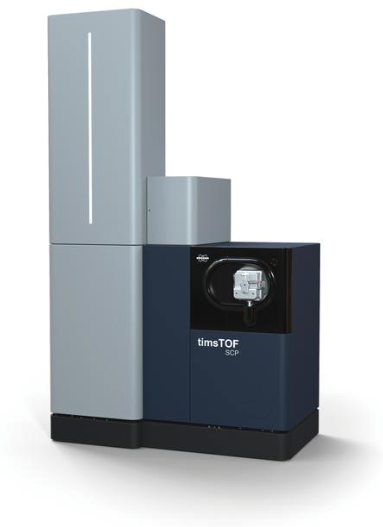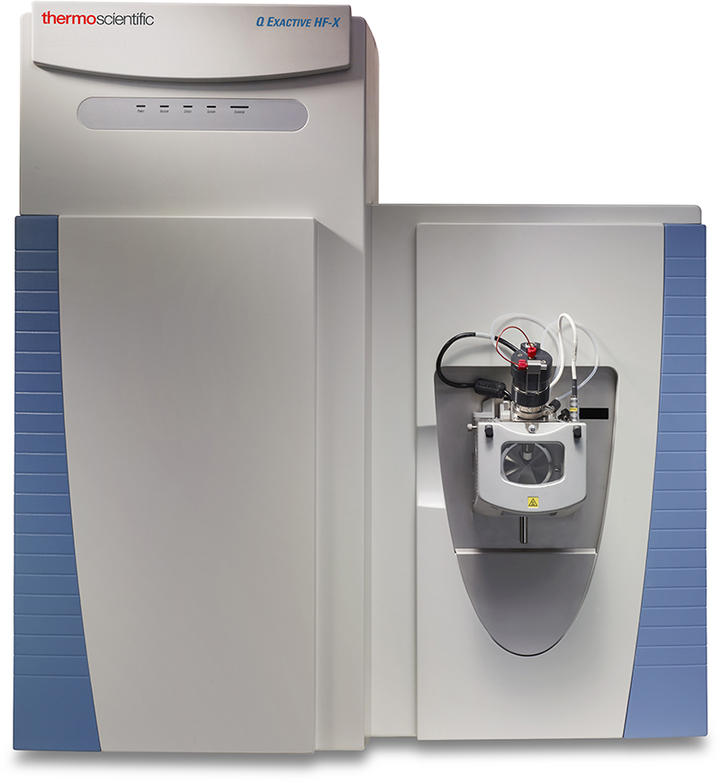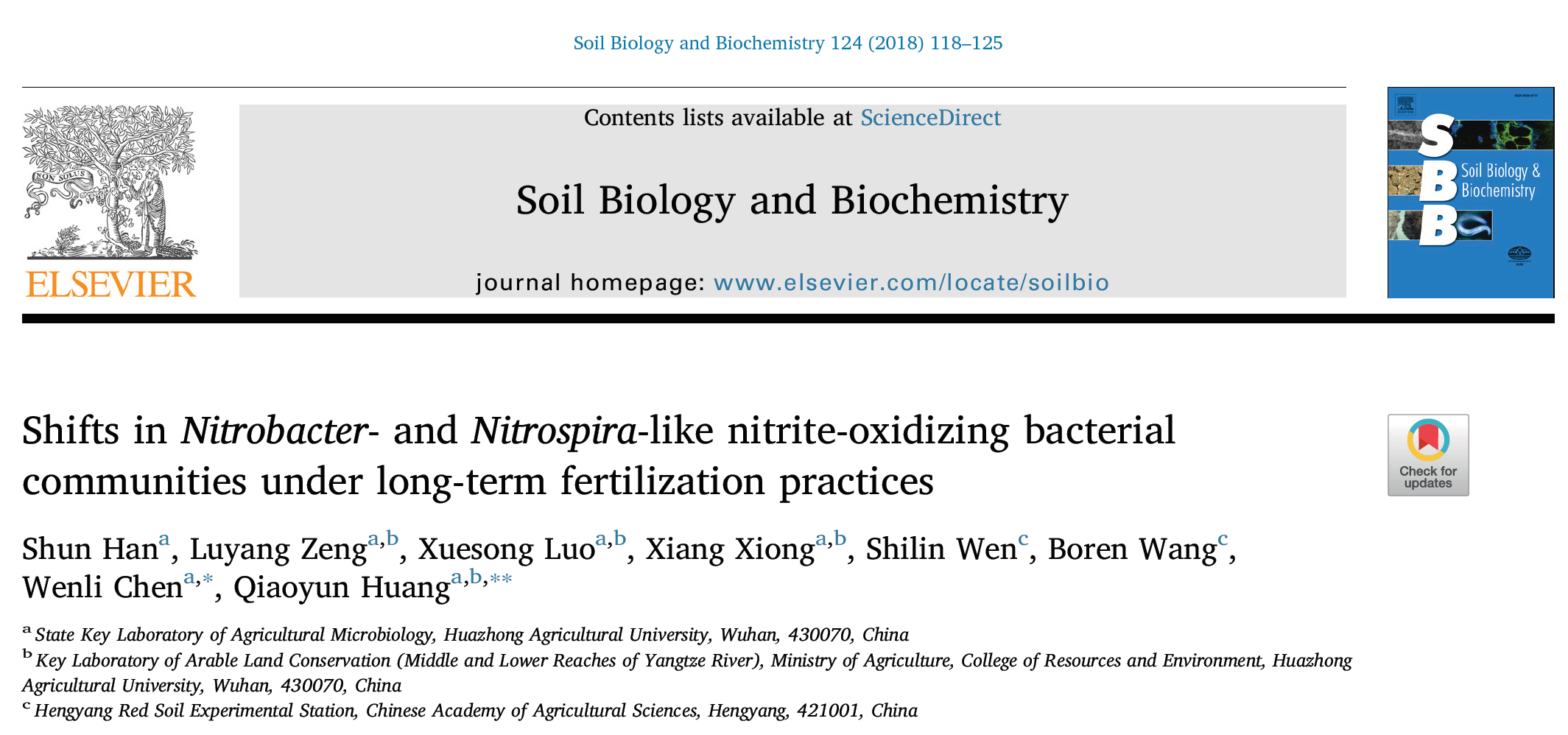
Abstract
Nitrite-oxidizing bacteria (NOB) are key players in the second step of nitri?cation, which is an important process in the soil nitrogen (N) cycle. However, the ecology of nitrite oxidizers and their response to disturbances such as long-term fertilization practices are scarcely known in agricultural ecosystems. We used samples from a Red soil subject to a long-term chemical and organic fertilization experiment, including control without fertilizer (CK), swine manure (M), chemical fertilization (NPK), and chemical/manure combined fertilization (MNPK) treat-ment, to explore how agricultural practices impact the community structure, abundance, and potential activity of nitrite oxidizers (PNO). The abundance of Nitrobacter was signi?cantly increased in the M and MNPK plots, whereas the abundance of Nitrospira was signi?cantly reduced in the M and NPK treatment plots and less in-
hibited in the MNPK treatment. The PNO showed a similar trend to that for Nitrobacter abundance. The diversity of Nitrobacter increased in the M-treated plots, while that of Nitrospira increased in the M and MNPK plots and decreased in the NPK plots. Non-metric multidimensional scaling (NMDS) revealed that the Nitrobacter- and Nitrospira-like NOB community was shift in these four fertilization treatments. Redundancy analysis showed that pH+SOC (soil organic carbon) and pH+TN (total nitrogen) signi?cantly explained the variation in the com-position of Nitrobacter and Nitrospira, respectively. In addition, the Nitrospira/Nitrobacter abundance ratio and community structure of Nitrobacter- and Nitrospira-like NOB are responsible for the changes of soil PNO. Collectively, these data suggest that the nitrite-oxidation process in the red soil is possibly controlled by both
Nitrospira and Nitrobacter-like NOB, which were shaped by pH+TN and pH+SOC, respectively.
text link : https://www.sciencedirect.com/science/article/pii/S0038071718301895














